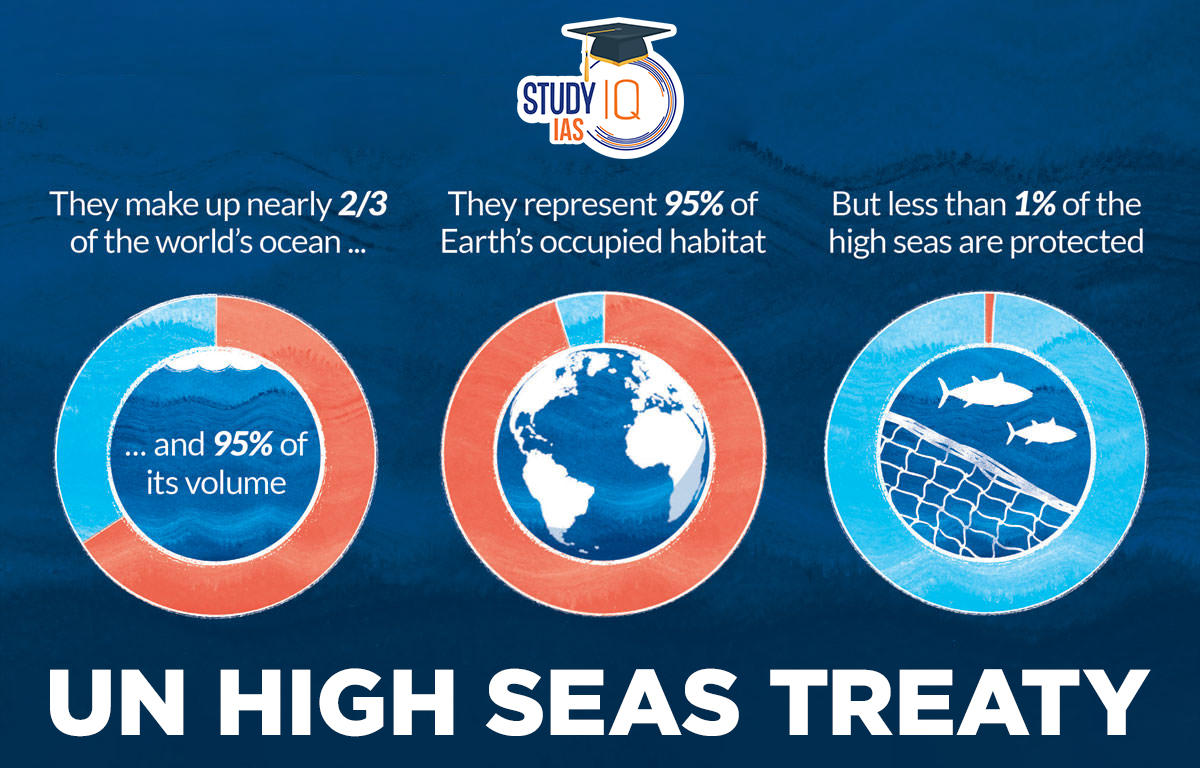Table of Contents
Context: United Nations member states have agreed on the first international treaty to protect the high seas.
What are High Seas?
- High seas are areas of oceans that lie beyond countries’ national waters (beyond 200 nautical miles).
- These are the largest habitat on Earth and are home to millions of species.
- High seas comprise more than 60 percent of the world’s oceans and nearly half the planet’s surface.

Need for the Treaty
- World’s oceans play a major role in regulating the global climate.
- They provide oxygen that sustains human and animal life, drive weather systems and store about one-quarter of the planet-heating carbon dioxide generated by human activities.
- Oceans support a huge range of biodiversity, including potentially millions of species that humans have not yet discovered.
- According to the Red List of Threatened Species by IUCN, nearly 10 percent of underwater plants and animals assessed so far are threatened with extinction.
- According to the World Wildlife Fund (WWF), a third of species such as sharks and rays are at the risk of extinction.
- According to the NASA, 90% of global warming is occurring in the ocean.
- Effects of ocean warming include sea level rise due to thermal expansion, coral bleaching, accelerated melting of Earth’s major ice sheets, intensified hurricanes, and changes in ocean health and biochemistry.
- Currently, there is no treaty for conserving the health of vast swathes of the earth’s oceans,
- Only 1.2% of international waters are protected, and only 0.8% are identified as “highly protected.”

Highlights of Treaty
- It is a legally binding agreement to conserve and ensure the sustainable use of ocean biodiversity.
- It is a first ever treaty to protect the world’s oceans that lie outside national boundaries.
- It is seen as a crucial component in the “30 by 30” targets agreed in Montreal, Canada, in December 2022.
- “30 by 30” is a global effort to bring 30 per cent of the world’s land and sea under protection by 2030.
- According to Greenpeace Data, 11 million square km of the ocean must be protected annually until 2030 to meet this target.
- Other Postulate of Treaty: Equal profit sharing from marine genetic resources, such as biological material from plants and animals in the ocean.
- A new body to manage conservation of ocean life and establish marine protected areas in the high seas.
- Establishes ground rules for conducting environmental impact assessments for commercial activities in the oceans.

Significance of Treaty
- It will help us achieve the goal of conserving or protecting at least 30% of the global ocean by 2030.
- It will try and regulate high seas activities like fishing, the routes of shipping lanes and deep-sea mining.
- It will lead to restrictions on deep sea mining and fishing.
- It will oblige countries to conduct environmental impact assessments of any proposed activities on the high seas.
- It will help reverse marine biodiversity losses and ensure sustainable development.


 Editorial of the day (18th Apr): Great I...
Editorial of the day (18th Apr): Great I...
 Expansion of Universe, Speed, Reasons, I...
Expansion of Universe, Speed, Reasons, I...
 Current Affairs 18th April 2024 for UPSC...
Current Affairs 18th April 2024 for UPSC...

















